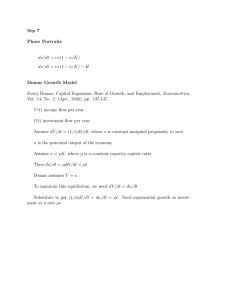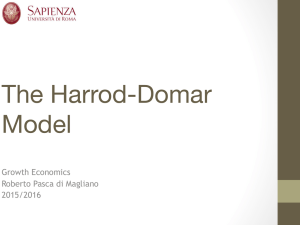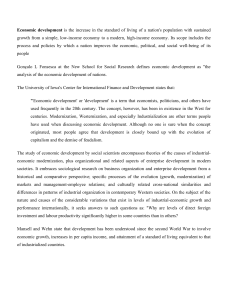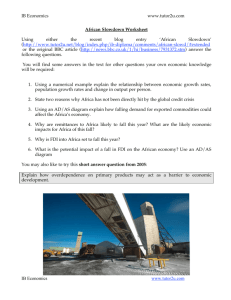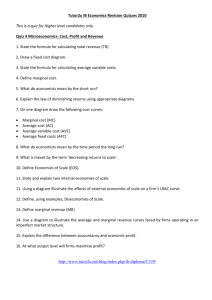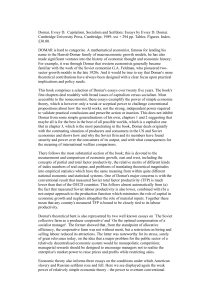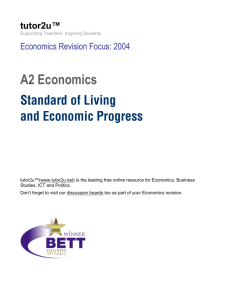IB Economics www.tutor2u.com IB Economics www.tutor2u.com The
advertisement
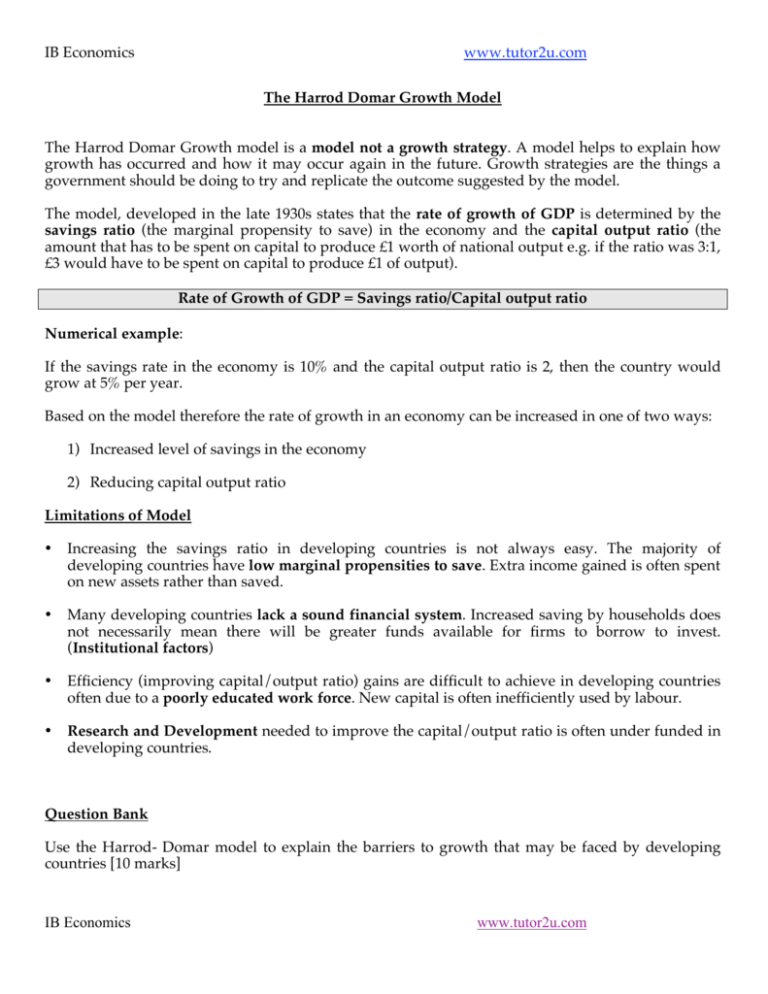
IB Economics www.tutor2u.com The Harrod Domar Growth Model The Harrod Domar Growth model is a model not a growth strategy. A model helps to explain how growth has occurred and how it may occur again in the future. Growth strategies are the things a government should be doing to try and replicate the outcome suggested by the model. The model, developed in the late 1930s states that the rate of growth of GDP is determined by the savings ratio (the marginal propensity to save) in the economy and the capital output ratio (the amount that has to be spent on capital to produce £1 worth of national output e.g. if the ratio was 3:1, £3 would have to be spent on capital to produce £1 of output). Rate of Growth of GDP = Savings ratio/Capital output ratio Numerical example: If the savings rate in the economy is 10% and the capital output ratio is 2, then the country would grow at 5% per year. Based on the model therefore the rate of growth in an economy can be increased in one of two ways: 1) Increased level of savings in the economy 2) Reducing capital output ratio Limitations of Model • Increasing the savings ratio in developing countries is not always easy. The majority of developing countries have low marginal propensities to save. Extra income gained is often spent on new assets rather than saved. • Many developing countries lack a sound financial system. Increased saving by households does not necessarily mean there will be greater funds available for firms to borrow to invest. (Institutional factors) • Efficiency (improving capital/output ratio) gains are difficult to achieve in developing countries often due to a poorly educated work force. New capital is often inefficiently used by labour. • Research and Development needed to improve the capital/output ratio is often under funded in developing countries. Question Bank Use the Harrod- Domar model to explain the barriers to growth that may be faced by developing countries [10 marks] IB Economics www.tutor2u.com
